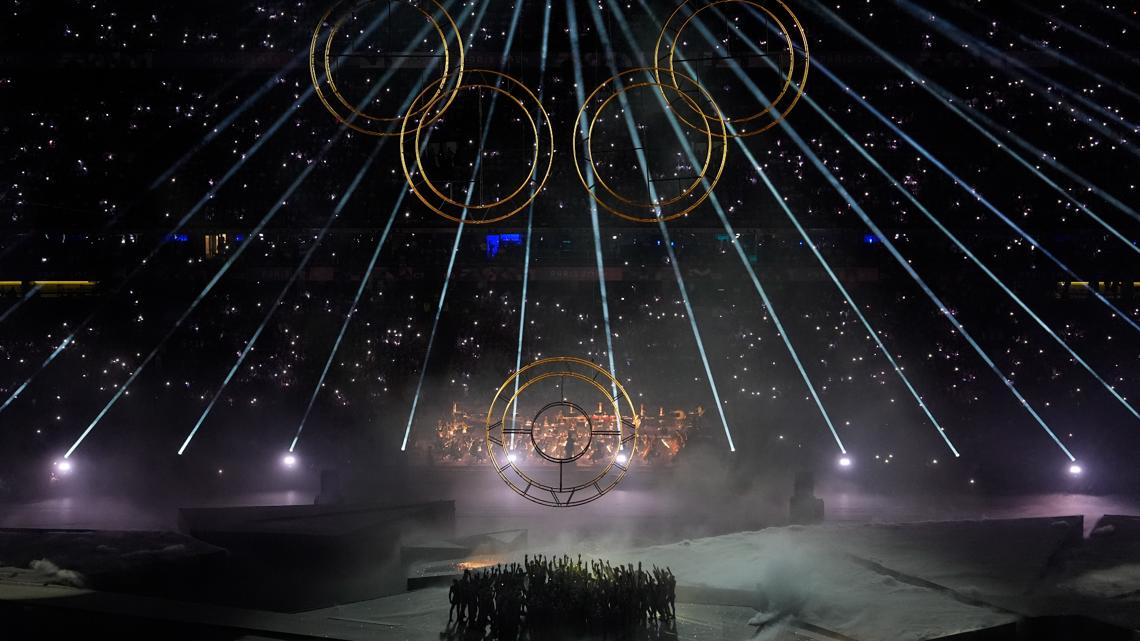WASHINGTON — The five interlocking rings that make up the Olympic logo are one of the most recognizable symbols in the world. But there are actually two meanings behind the colorful imagery, which had a big role in the Paris Olympics Closing Ceremony.
During the ceremony, acrobats on stage were “excavating the Olympic rings” — helping reconstruct the iconic symbol of the Games as they were raised above the stage in dramatic fashion — bringing to life the revival of the Olympics in 1894.
The rings were introduced in 1913, according to the International Olympic Committee. In the center of a white background, the rings appear in the order of blue, yellow, black, green and red. The rings made their official debut seven years later at the 1920 Olympics in Antwerp, Belgium.
The logo has received minor variations of the years, including white spaces between the rings where they intersect with each other. By 2010, it had reverted to its original form with no spaces.
The first, and most obvious meaning, is tied to the colors.


According to Rule 8 of the Olympic Charter, “The Olympic symbol expresses the activity of the Olympic Movement and represents the union of the five continents and the meeting of athletes from throughout the world at the Olympic Games.”
The five continents referred to are Africa, Asia, the Americas, Europe and Oceana.
The ring colors on the white background represent the nations of the world. Every country in the world has at least one of these five colors on their flag (although they might be a different shade).
The other meaning is referenced at the end of the rule: the meeting of athletes.
All five rings are interconnected, symbolizing how the games bring the world together to compete.
"These five rings represent the five parts of the world now won over to the cause of olympism and ready to accept its fecund rivalries," Olympic Movement founder Pierre de Coubertin said of the symbol.



